#Dino V6
Text



Abarth SE 030, 1974, by Pininfarina. A racing prototype based on the Fiat X1/20 project that became Lancia's Montecarlo. The SE 030 was powered by a mid/rear mounted 3.2 litre version of the Ferrari-built Dino 120º V6 as fitted to Fiat's 130. The car was entered in the 1974 Giro d’Italia crewed by Giorgio Pianta and Cristine Becker, it took second place overall, behind a Lancia Stratos.
#Abarth#Abarth SE 030#Pininfarina#1974#race car#mid-rear engine#Dino V6#ferrari engine#prototype#1970s#Giro d’Italia#Fiat X1/20
251 notes
·
View notes
Text

From August, 2023
#Ferrari 246 sport Dino#v6#vintage Ferrari#monterey car week#Leica m11#original photography on tumblr#august 2023
12 notes
·
View notes
Text
#scuderia Ferrari#Ferrari#Ferrari Dino#Fiat Dino#Lancia#Lancia V6#Fly Yellow#2.0 L V6; 72 degree bank angle#3.0 L V6; 72 deg#Nissan Maxima#All Aluminum V6#motorcycle#ford motor co#mo#moto#motor#motorious motorsports#motorious#motors#Vito Jano
2 notes
·
View notes
Photo



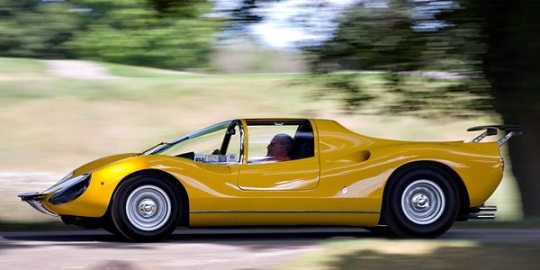
1967 Dino 206 S Competizione Prototipo.
The Dino 206 S is a sports prototype produced by Ferrari in 1966–1967 under the Dino marque. Coachbuilder Pininfarina, engine Tipo 231/B V6.
251 notes
·
View notes
Text
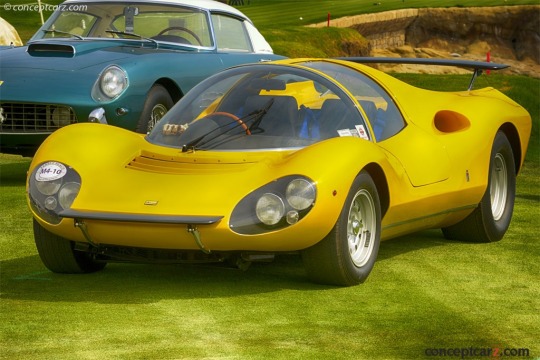
1967 Ferrari Dino 206 Competizione Competition Berlinetta
Alfredo 'Dino' Ferrari was credited with the design of the Ferrari V6 engine. With help from the legendary engineer Vittorio Jano, Dino influenced Enzo Ferrari's decision to produce racing cars in the 1950s powered by V6 and V8 engines.
Enzo Ferrari was hesitant to adapt the mid-engine layout for his customer cars, fearing they might be unsafe. He eventually relented and Sergio Pininfarina was tasked with designing a mid-engined concept for the 1965 Paris Motor Show, but demanded that it wear the Dino badge alone. At the Turin car show in 1966, the Dino 203S was well receipted and production soon followed.
The production Dino 206GT had many updates, modifications and changes such as softer edges and curving lines typical of earlier Italian cars. The 2-liter all-aluminum engine was transversely-mounted mid-ship and offered 160 horsepower. The V-6 engine featured dual overhead camshafts and 9.7:1 compression ratio. The crankshaft featured four main bearings with induction via three Weber 40 DCN/4 2-barrel carburetors. The frame of the 206GT was made from lightweight aluminum and fitted with full independent suspension. Disc brakes could be found at all four corners. The wheelbase of the car measured a short 90-inches. Top speed was a very impressive 146 mph. In total, there were only 152 examples built during 1968 and 1969.
This unique prototype followed the Dino 206 racing cars that raced at Le Mans and were powered by the Dino V6 engine. First seen at a 1966 Ferrari press conference, the standard 206 was bodied at Piero Drogo's Carrozzeria and featured light alloy bodywork and a semi-monocoque chassis. Only 18 were built, so the model was restricted to the Group 6 prototype class. This one-off 206 chassis, built by Ferrari, then went to Pininfarina to receive a new custom body. The plan was to use race-car engineering in a road-going supercar; it used an engine from one of three Dinos that raced at Le Mans in 1966. Designed by Paolo Martin, the car was shown at the 1967 Frankfurt Auto Show as a 'Dino' Berlinetta Prototype Competition, to much acclaim. Pininfarina preserved the car in their private museum until 2006, when they offered the current owner the opportunity to purchase the car and become its first owner.
#Ferrari Dino 206 Competizione Competition Berlinetta#car#cars#Ferrari Dino 206#berlinetta#ferrari dino#dino#ferrari
30 notes
·
View notes
Text
1969 Ferrari Dino 246 GT 🇮🇹
Engine: V6 / 2419cc / 192 HP
Top speed: 235 km/h (146 mph)
16 notes
·
View notes
Photo


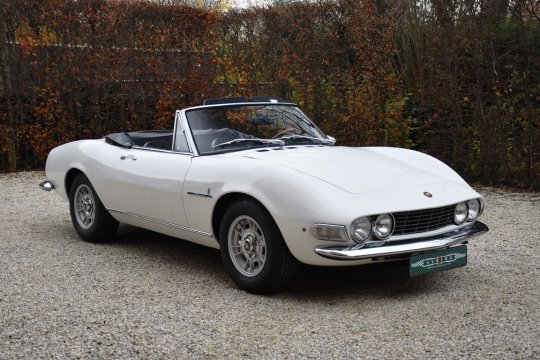


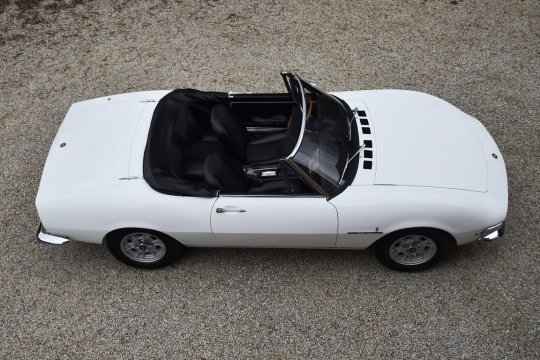
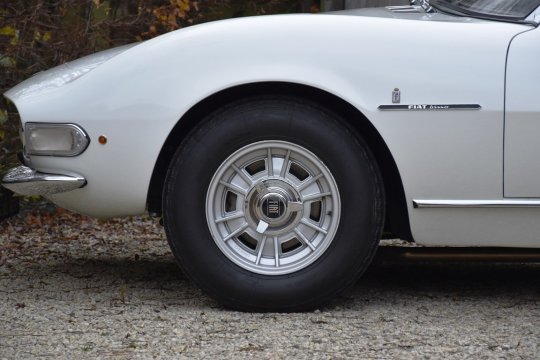
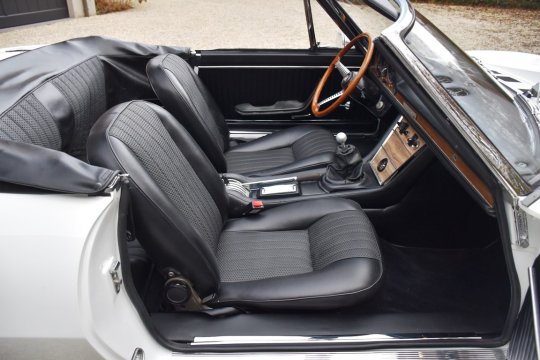
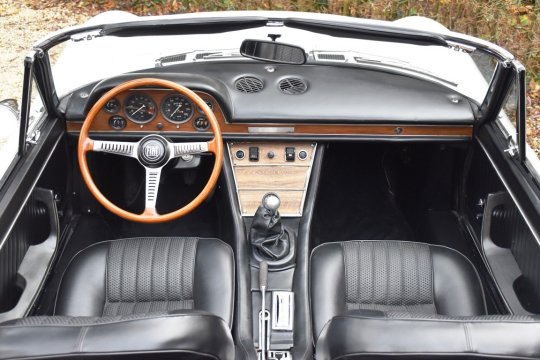
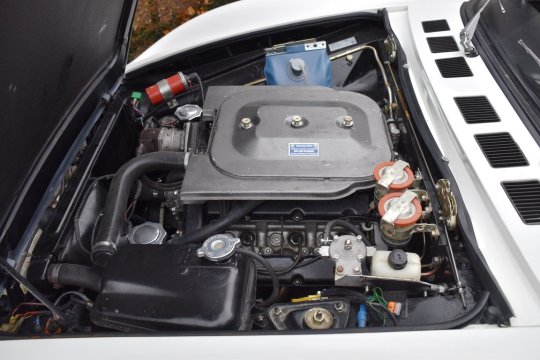
Fiat Dino Spider 2000
The Fiat Dino was introduced as a 2-seater Spider at the Turin Motor Show in October 1966. The car was designed and manufactured for Fiat by Pininfarina. The Dino Spider was offered with an all-aluminium DOHC 2.0 L V6, coupled to a 5-speed manual transmission. The same 2.0-litre engine was used in the mid-engined Ferrari-built Dino 206 GT, which was introduced in pre-production form one year later and went on sale in 1968. Fiat quoted 158 bhp for the Fiat Dino, which was quite impressive in the sixties for a 2,0 litre engine. Finished in stunning Bianco (which was its original colour) with a nicely patinated interior, this car looks as good as it drives. The typical metallic sound of the Dino V6 engine adds a lot to the driving experience, and the sculpted front wheel arches offer a similar view from the drivers seat as in a Ferrari Dino 206 GT. With only 1133 examples built this is a very rare car, and one of the sexiest Fiats ever made.
132 notes
·
View notes
Text
Total white: 1971 Fiat Dino 2400 Spider
Total white: 1971 Fiat Dino 2400 Spider
Only 420 were produced, but the 2400cc, unlike its smaller sister (2000cc) is actually a Ferrari with a different body and interior.
And the worst thing is that I have always known that these cars would one day have a great value not because I have a particular intuition but because years ago I was asking myself a trivial question: “This car is beautiful, it is spider and equipped with of a V6…

View On WordPress
14 notes
·
View notes
Photo

The famous ‘Sharknose’ alias Ferrari Dino 156 F1 1961 with Phil Hill’s helmet. Hill won the 61 F1 World Championship with this ‘little’ Dino. The 1961 version was affectionately dubbed ‘sharknose’ due to its characteristic air intake ‘nostrils’ and had -at the beginning of the season- a relatively small engine, the V6 65-degree Dino engine. #giclee #gicleeprint #digitalillustration #automotiveart #carartwork #f1illustration #f1poster #f1classic #f1 #f1car #classicf1 #ferrari156 #156sharknose #ferrari156sharknose #ferrari156f1 https://www.instagram.com/p/CizlpWIoPhX/?igshid=NGJjMDIxMWI=
#giclee#gicleeprint#digitalillustration#automotiveart#carartwork#f1illustration#f1poster#f1classic#f1#f1car#classicf1#ferrari156#156sharknose#ferrari156sharknose#ferrari156f1
7 notes
·
View notes
Text
I don't post this "design phase" stuff very often (more here than on Twitter back before) but here's something:

As my personal take on "super-deformed" JRPG style pixel character design evolves, particularly my larger sprites derived from my Hedge Wizard style, I sometimes experiment with fun ideas like "what if Redwall but dinosaurs?" and get something a little like dragonborn from D&D haha.
What you don't see here are some other iterations of the base body models. I found a general feminine and general masculine look I liked and iterated from there for now.
This stuff isn't "for" anything and I might not touch it again, or not for a while, or I might use it someday in something unexpected.
They are also reminiscent, in some ways, to the goblin designs I was doing last year for "Gobtober" before I got caught up in more important projects and had to stop.

Or the "looser" character designs I did for "Cathy Goes Flipside", a video game I made/am making for my wife. About her adventures in a magical world made up of references to shit she likes, everything from Over the Garden Wall to The Terminator.
This is Sgt. Squash, a mercenary for hire and ex member of the Punkin Clan military. She hangs out in a bar based on the Double Deuce from Roadhouse.

You can also kinda see some markers of my process in those dinos, too. It's nothing unusual. I tend to work off template designs which are nekkid barbie doll style sprites.
Things sometimes get wild from there:

The above is an example of a "sketchbook" for designs. I have tons of these, roughly organized, all over my shit. This one was for the v5 designs for The Hedge Wizard characters. Been replaced already w/ v6 designs that are somewhat but not necessarily noticeably different. Better, for sure, but mostly in a way I notice and maybe other pixel artists might.
Anyways, thanks for having a look!
5 notes
·
View notes
Text

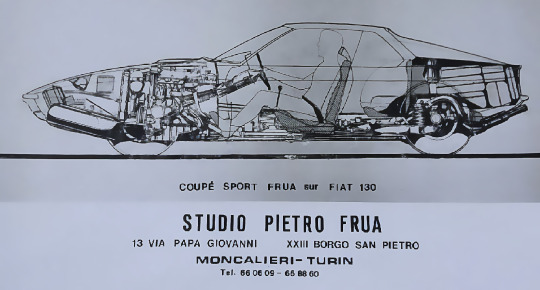
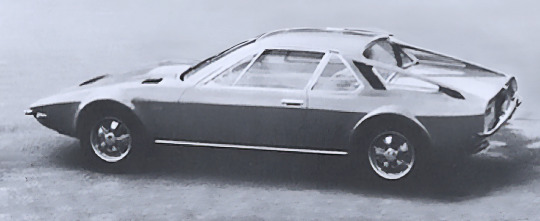
Fiat 130 Coupé Sport, 1971, by Frua. Pietro Frua's styling for the Ferrari-engined 130 was much more sporty than Pininfarina's production version but Fiat had no interest in pursuing Frua's proposal so he repurposed it as a Citroën
#Fiat#Fiat 130 Coupé#Fiat 130 Coupé Sport#Frua#Studio Pietro Frua#Pietro Frua#concept#design study#prototype#Ferrari engine#V6#Dino V6#1971
152 notes
·
View notes
Text
Exoto Ferrari Dino 156/120 Sharknose #2 GP Italien Phil Hill GPC97204 Finsh Line one of 61

Exoto Ferrari Dino 156/120 Sharknose #2 GP Italien Phil Hill GPC97204 Finsh Line one of 61
Exoto Ferrari Dino 156/120 Sharknose #2 GP Italien Phil Hill GPC97204' Winner, 1961, driven by Phil Hill
Hochdetailliertes Modell mit mehr als 1600 Einzelteilen. Die Antriebswellen und die Kupplungsglocke werden über ein Getriebe bewegt. Das Modell wurde aus vorbildgerechten Materialien in Handarbeit hergestellt.
Version Finsh Line mit Verschmutzungen, wie sie nach dem Rennen zu finden sind.
Zu den Merkmalen der Grand Prix Classics Exoto Tipo 156 "Sharknose" Nachbildung gehören:
• Über 1400 Fotoätz- und bearbeitete Teile
• Mikrometrische präzisionsgegossene Karosseriebleche mit Gussteilen mit variabler Dicke
• Integriertes umgeformtes und tiefgezogenes Blech
• Polycarbonat, transparente Teile in optischer Qualität
• Vorderes Karosserieblech öffnet und schließt sich ohne die Verwendung von Schrauben oder Werkzeugen
• Federbelastete Gas-, Kupplungs- und Bremspedale
• Funktionale Vergaser-Absperrklappen, die mit dem Gaspedal verbunden sind
• Präzise kugelgelagerte, bearbeitete Naben an den Achsen, vorne und hinten
• Vollverzahntes, kugelgelagertes Getriebe, das das Drehmoment auf die rotierenden Halbwellen und die rotierende, maschinell bearbeitete hintere Kupplungsbaugruppe überträgt
• Vollständig verkabelte und verkabelte 120- und 65-Grad-V6-Motoren
• Fortschrittliche Metallrohr-Chassiskonstruktion
• Aufklappbare und abnehmbare Motorabdeckung
• Benzindeckel mit Klappdeckel
• Voll funktionsfähige Kugelgelenk-Vorderradaufhängung mit Schraubenfedern
• Voll funktionsfähige, bearbeitete Zahnstangenlenkung
• Hervorragend simulierte Aluminiumkomponenten
• Bearbeitete belüftete Ganzmetall-Scheibenbremsen rundum
• Abnehmbare Metallspeichenräder mit Rechts- und Linkslauffunktion links und rechts
• Halbpneumatische Reifen mit korrektem Profil
• Vernickelte Fotoätz-Metallstrahler
• Geformte Wabenabdeckungen über den Vergasern; kein einfaches Drahtgeflecht, genau wie das echte Auto
• Vollständiger Verzicht auf simulierte Schraubenköpfe; ersetzt durch bearbeitete Sechskantschraubenköpfe
• Durchgehend echte gefräste Nietstifte
• Realistisches Finish und Gefühl
• 2K-Lackierung mit hoher Dichte
• Und vieles mehr ...
Der Exoto Ferrari Dino 156/120 Sharknose bildet das Modell nach, welche 1961 in Spa, Francorchamps von Graf Wolfgang Berghe von Trips eingesetzt wurde. Das Reglement schrieb damals einen 1,5-Liter-Motor vor. Die Autos waren gegenüber ihren Vorgängern nicht nur leistungsmässig sondern auch optisch wesentlich kleiner und leichter. Von den insgesamt 8 oder 9 gebauten Autos wurden alle später von Ferrari selbst vernichtet.
Der Ferrari 156 wurde von 1961 – 64 eingesetzt. Als erster Mittelmotor Ferrari, das Konzept stammte von Carlo Chiti, wurde er von einem 1,5 Liter V6 Motor von Mauro Forghieri angetrieben. Der Motor war leicht und leistete 190 PS. Die Bauweise des Motors verhalf dem Auto zu einem extrem tiefen Schwerpunkt. #exoto #autoart #tecnomodel #F1 #lemans #diecast #diecaster #diecastcars #diecastcollector #diecastphotography #modelcars #giftforhim #giftfordad #Christmas #bbr #frontiart #cmc #luxury #collectorsitem
Lesen Sie den ganzen Artikel
0 notes
Text
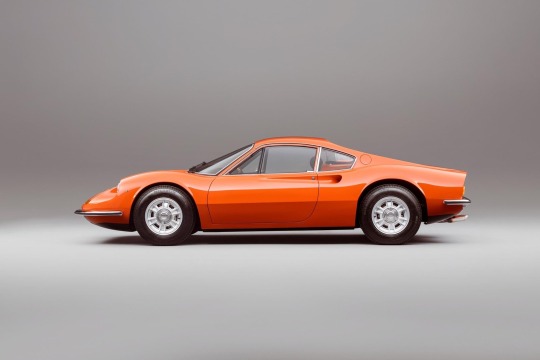
Disclosing Auto News:
This is a Dino 246. Not a Ferrari, a Dino! In the late sixties, Ferrari was struggling a bit and decided to get as close to "mass production" as it could in order to save the company. Because it was to be a profit making venture Enzo Ferrari insisted on using proprietary parts, some Fiat parts and it was not to be called a "Ferrari". It was a sort of cut price car, but wash your mouth out saying that today. The first was released in 1967 and was powered by a 2.0 litre V6 engine and was called the Dino 206. It was a big seller in the US but there was a request for "more performance please", so engine capacity was increased to 2.4 litre — 246 — and the wheelbase increased by 60mm.
The 246 continued in production in various guises until 1974 when it was discontinued even though demand was still strong.
Only in the very last of them did Enzo weaken and allow the car to be called a Ferrari — although, restrospectively, they are today all called Ferraris and all possibly have had Ferrari badges retrofitted — but for most of their production life they were simply "Dino".
Good looking? Most people go weak at the knees at first glimpse of a Dino — it certainly is voluptuous, like Marilyn Monroe's bosoms.
I am going to carry on this conversation in the next issue of Classic Driver, but have your say here on what you think of the Dino.
0 notes
Text
Ferrari's 2024 Finali Mondiali on the Mugello Circuit

A single-make auto racing championship, the Finali Mondiali marks the final stages of the Ferrari Challenge. The 2024 Finali Mondiali on the Mugello Circuit will occur from October 16 to October 20 at the Autodromo Internazionale Enzo e Dino Ferrari in the Bologna suburb of Imola, Italy. Curated by the renowned German racing circuit architect Hermann Tilke, its complicated curves and off-cuts have earned this track a widespread reputation for technical difficulty. The Finali Mondiali first took place on this track in 1998.
Beyond its high level of competition on a notable track, the 2024 Finali Mondiali on the Mugello Circuit is drawing excitement as the racing debut event of the Ferrari 296 Challenge. It has a V6, 120-degree turbo, dry sump engine, advanced aerodynamics, and a redesigned braking system. Ferrari first revealed this new model at the 2023 Finali Mondiali, making it the ninth model the company created in the event's history.
0 notes
Photo

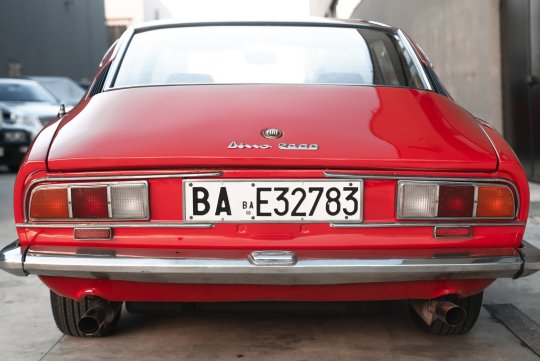



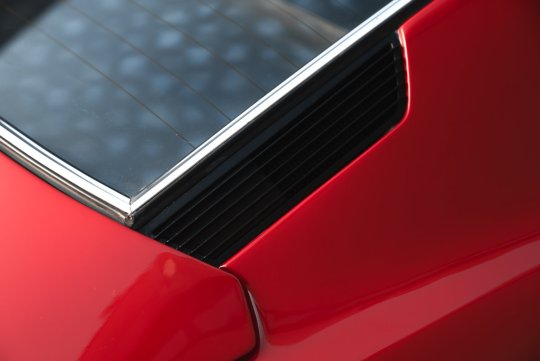
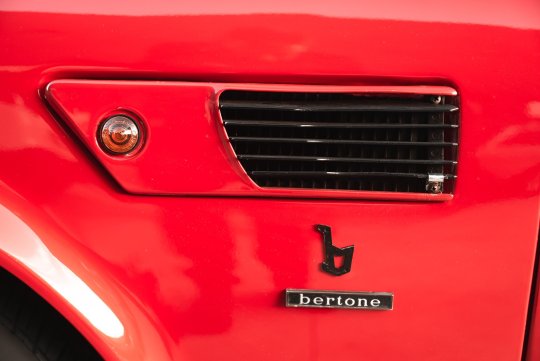



Fiat Dino 2400
It looks modern still, despite its age. Bertone styled the fastback Coupé, a steel monocoque like the Pininfarina-designed Spider, which was unveiled at the Geneva show in March 1967. It has lean lines that are good from every angle. There’s a hint of aggression from the forward-leaning four-headlamp snout and a well-proportioned elegance created by the flowing curves over the wheels and the neatly resolved tail. The steering is unpowered and when you’re going slowly it’s laughably heavy. The wheel is a very Italian feature, a nice wood rim and perforated alloy spokes – it looks handsome and feels great. Behind it there’s a veneered plywood dash well stocked with legible black-on-white Veglia dials. The 9000rpm tacho and 250km/h (155mph) speedo, with their quaint fishtail needles, flank gauges for the oil and water temperature, oil pressure and fuel contents together with an analogue clock. A twist of the key and the V6 engine fires up with a lovely, bassy rumble through the big twin tailpipes. That dog-leg gearbox and the ‘Dino 2400’ badge on the back mark this out as a later version of a car that had been created as a way to homologate Ferrari’s V6 engine for Formula 2 racing, which required a production engine block with at least 500 units built. That was too many for Ferrari to handle, so it struck a cunning deal with Fiat to put the engine into a road car.In 1969 the 2.0-litre V6 was replaced by a new 2.4-litre iron-block engine with an extra 20bhp and enough extra torque that the gearbox had to be upgraded to the stronger ZF unit with its dog-leg first gear. The gear lever gate is quite narrow between second and third, so you can easily get fifth by mistake when changing up, Contemporary tests gave a 0-60mph time of just under nine seconds for the Coupé, about half a second shy of the lighter Spider. It’s respectable performance for its era, about the same as a BMW 2500CS E9. All the Fiat Dinos have double wishbone front suspension, but where the earlier Dinos have live axle and leaf springs at the back, the 2400s have a strut-type independent rear end, The car is very surefooted, althought it’s also quite firm on the road. In the wet, it doesn’t hesitate or jump or wiggle at all.
62 notes
·
View notes